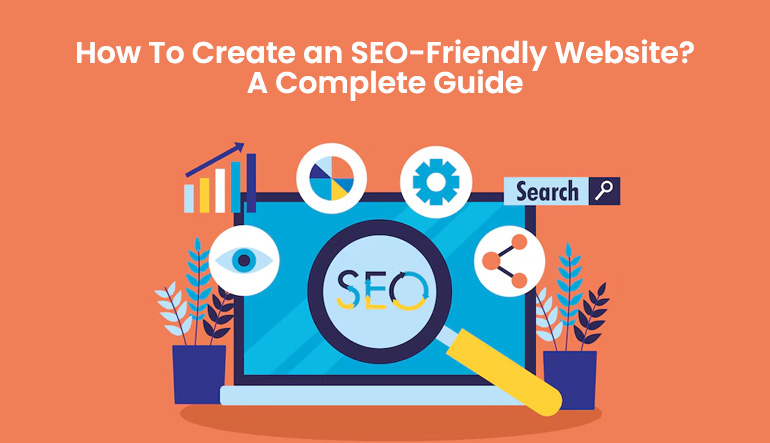If you own an eCommerce store built on Magento 2, you know how important it is to appear on the first page of search results.
However, with growing competition in eCommerce, having a visually appealing store or unique products isn’t enough.
You need a solid Magento 2 SEO strategy that increases traffic, enhances user experience, and drives consistent sales.
In this article, we’ll cover the most effective practices to optimize your Magento 2 SEO — focusing on technical setup, content, and user experience to achieve the best results.

Understanding Magento 2 SEO and Its Importance
Magento 2 is one of the most powerful eCommerce platforms, but it’s not fully optimized for SEO out of the box.
Proper configuration and technical tuning are required to make your store search engine–friendly.
Effective Magento 2 SEO improves the visibility of product pages, categories, and content in search results — attracting more visitors and increasing sales without paid ads.
1. Setting Up the SEO Basics in Magento 2
The first step is configuring Magento 2’s built-in SEO settings correctly.
Enable SEO Settings.1
Go to:
Stores > Configuration > Catalog > Search Engine Optimization
- Enable Use Web Server Rewrites to create clean URLs.
- Use short, descriptive URLs that reflect the page content.
Add Automatic XML Sitemaps .2
Magento automatically generates XML sitemaps — make sure to submit them to Google Search Console for better indexing.
Optimize Meta Titles and Descriptions .3
Make each title unique and engaging, naturally including the keyword “Magento 2 SEO”.
2. Improve Site Speed and Performance
Site speed is a crucial factor for both SEO and user experience. Follow these steps:
- Enable caching in the performance settings.
- Use a CDN to load images and files faster.
- Enable Lazy Loading for product images.
- Choose a fast Magento-optimized hosting provider for better speed.
Improving site speed not only enhances user satisfaction but also helps your store rank higher in search results.
3. Use Professional Magento 2 SEO Extensions
Several SEO extensions can greatly enhance your Magento 2 optimization:
- Automatically optimizes titles and descriptions.
- Provides keyword analysis directly in the admin panel.
- Supports automatic image optimization.
- Adds Schema Markup for rich snippets.
- Simplifies internal link management.
- Automatically optimizes category and page titles.
Using these tools improves your SEO performance even without deep technical skills.
4. Create Quality Content That Boosts Magento 2 SEO
High-quality content is one of the most powerful factors influencing your Magento 2 search visibility.
Write unique, keyword-rich content for product pages and blog posts — but avoid keyword stuffing.
Each product page should have a detailed, appealing description, optimized images with alt tags, and an FAQ section to enhance engagement.
Also, build a blog on your store to share product tips, comparisons, or guides.
This kind of content not only improves your SEO but also builds trust with your audience and turns visitors into loyal customers.
5. Choose Smart Keywords and Focus on Long-Tail Phrases
Success in Magento 2 SEO heavily depends on keyword strategy.
Don’t rely only on generic keywords — target long-tail keywords such as
This approach attracts more specific visitors and increases conversion rates — a key factor in any SEO strategy.
6. Ensure Responsive Design and Great User Experience
Top-performing stores prioritize user experience (UX).
Make sure your store design is mobile-friendly, with clear navigation and an easy checkout process.
A seamless user experience leads to higher customer retention and better search rankings.
7. Track Performance and Analyze Results
Analysis is the key to continuous SEO improvement.
Use tools like Google Analytics and Google Search Console to monitor performance.
Track keyword rankings, identify top-performing pages, and adjust your strategy based on real data.
Continuous analysis helps you understand user behavior and optimize the shopping experience.
Conclusion
Optimizing Magento 2 SEO is an ongoing process that requires constant monitoring and development. Start with the basics, then improve speed, and focus on the quality of your content and experience. By following these practices, you’ll ensure your store appears on the first pages and achieve sustainable growth in traffic and sales.
FAQs About Magento 2 SEO
Is Magento 2 SEO-friendly by default?
Yes, Magento 2 includes solid default SEO features, but customization and optimization are needed for the best results.
How can I improve site speed in Magento 2
Enable caching, compress images, use a CDN, and choose high-performance hosting.
Does content really affect Magento 2 SEO
Absolutely. Unique, keyword-optimized content is one of the strongest ranking factors for product and category pages.
Start improving your store’s SEO now!
If you own a Magento 2 store, start implementing these practices today, step by step.
Improving Magento 2 SEO is not a short-term task; it’s a long-term investment that drives sales growth and gives you a strong market position.
Start with the basics, monitor performance continuously, and don’t hesitate to hire an expert to professionally optimize your site.
Browse Growsera’s Magento support service